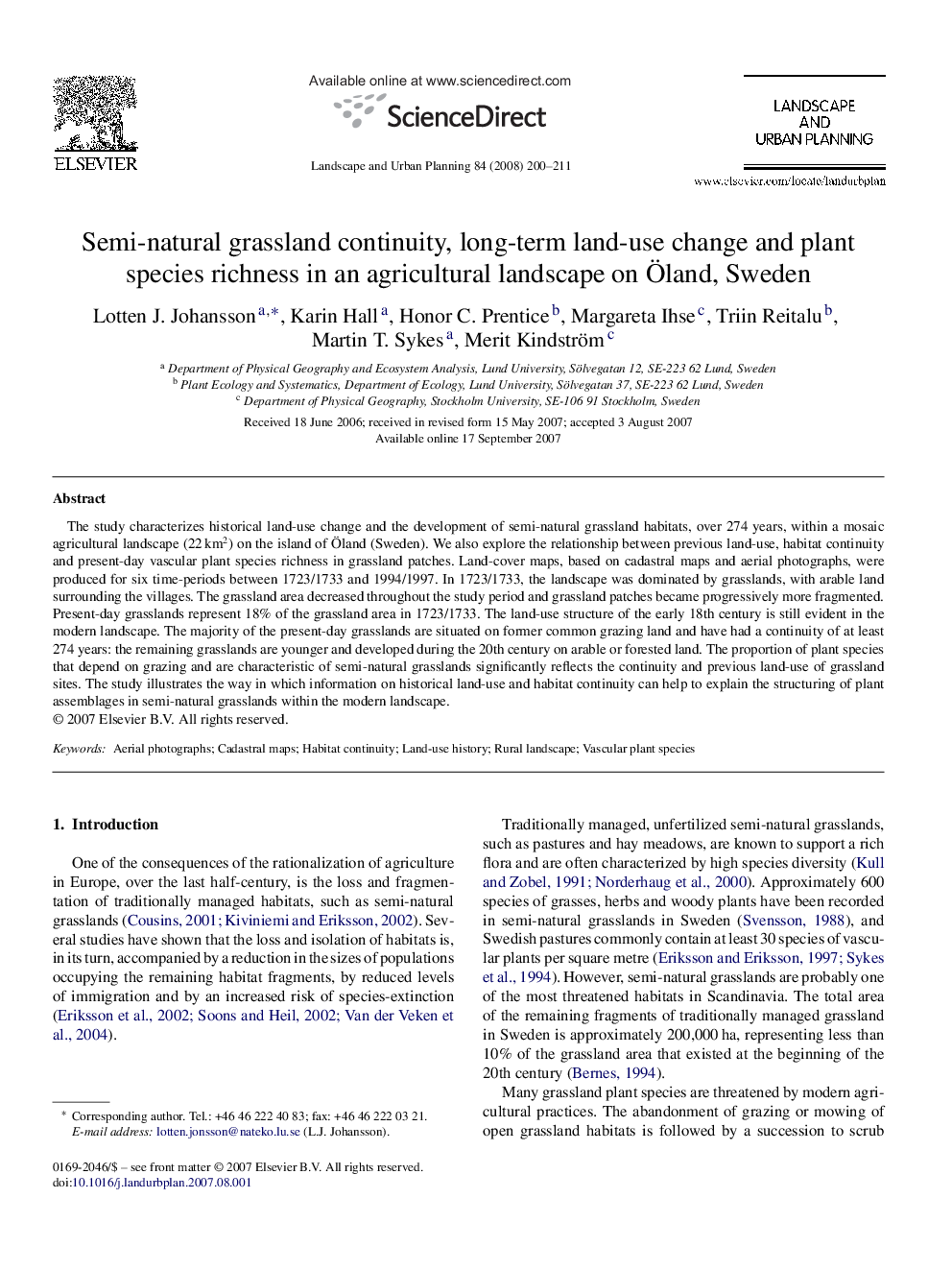| Article ID | Journal | Published Year | Pages | File Type |
|---|---|---|---|---|
| 1050149 | Landscape and Urban Planning | 2008 | 12 Pages |
The study characterizes historical land-use change and the development of semi-natural grassland habitats, over 274 years, within a mosaic agricultural landscape (22 km2) on the island of Öland (Sweden). We also explore the relationship between previous land-use, habitat continuity and present-day vascular plant species richness in grassland patches. Land-cover maps, based on cadastral maps and aerial photographs, were produced for six time-periods between 1723/1733 and 1994/1997. In 1723/1733, the landscape was dominated by grasslands, with arable land surrounding the villages. The grassland area decreased throughout the study period and grassland patches became progressively more fragmented. Present-day grasslands represent 18% of the grassland area in 1723/1733. The land-use structure of the early 18th century is still evident in the modern landscape. The majority of the present-day grasslands are situated on former common grazing land and have had a continuity of at least 274 years: the remaining grasslands are younger and developed during the 20th century on arable or forested land. The proportion of plant species that depend on grazing and are characteristic of semi-natural grasslands significantly reflects the continuity and previous land-use of grassland sites. The study illustrates the way in which information on historical land-use and habitat continuity can help to explain the structuring of plant assemblages in semi-natural grasslands within the modern landscape.
